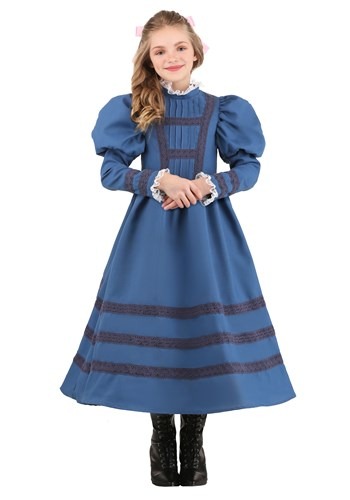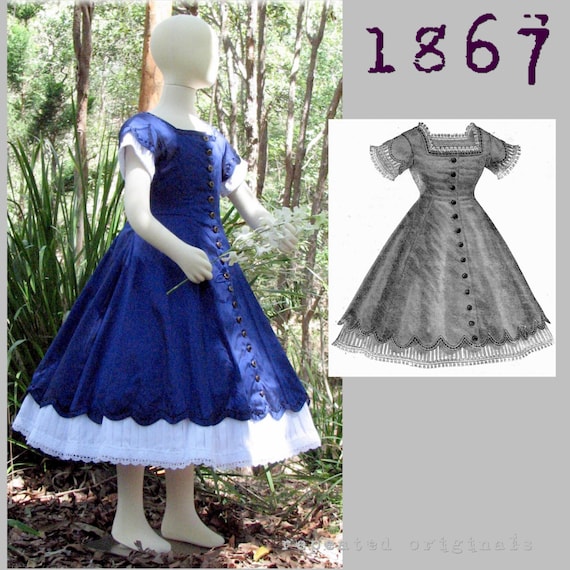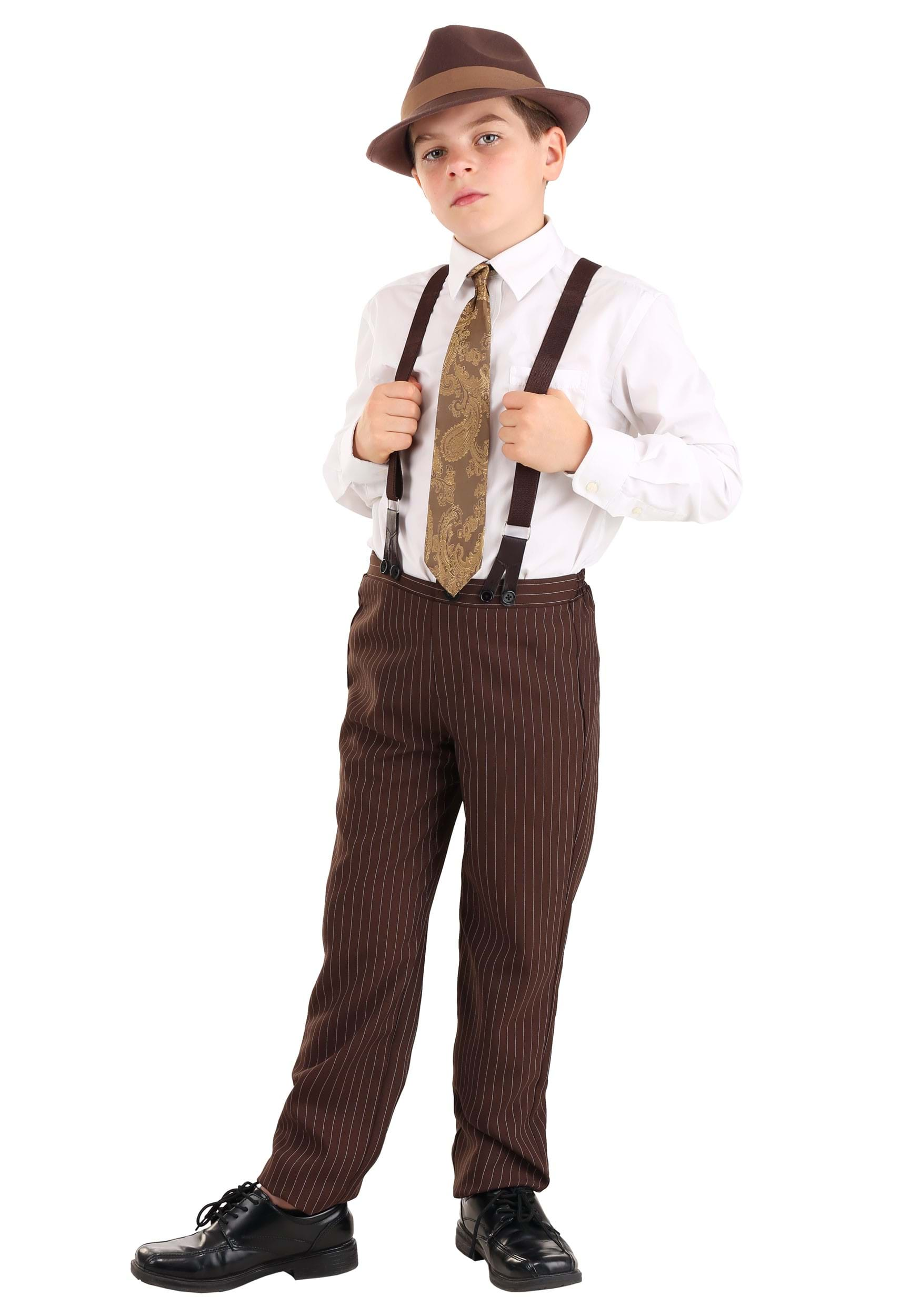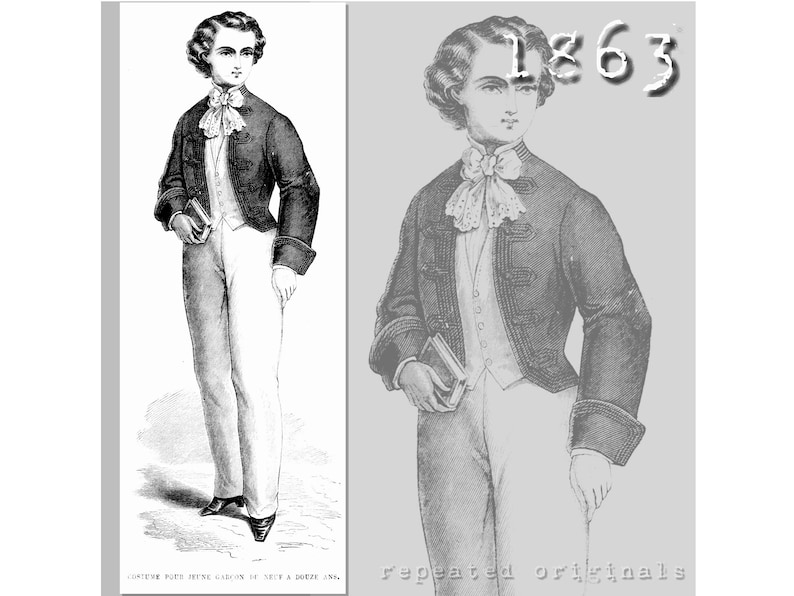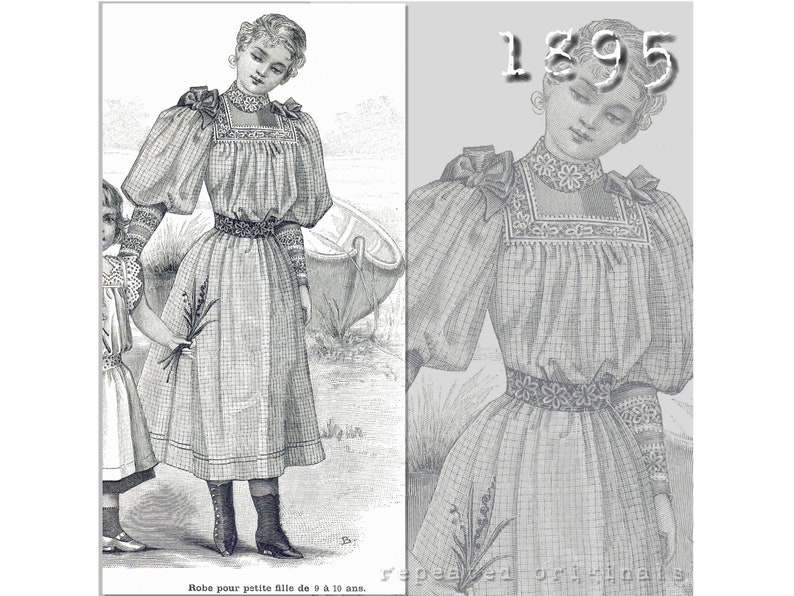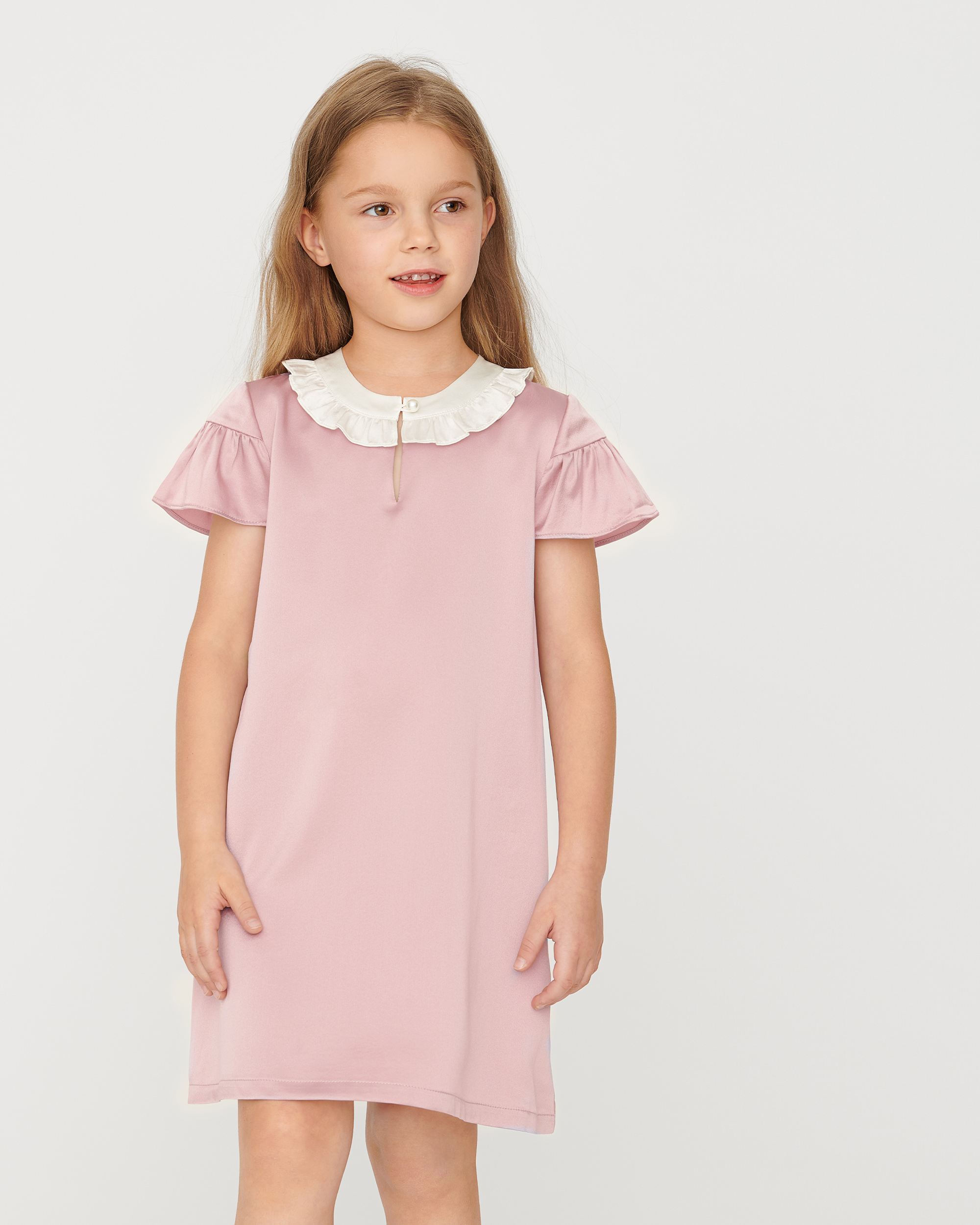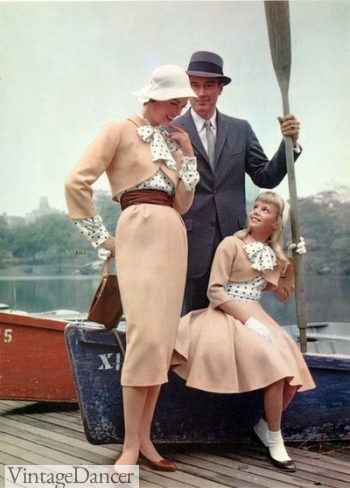
1950s family
With three kids under five years old (girl and two boys) and a lot of vintage themed events and family pictures to dress up for, I have done more than a little fashion research on vintage children’s clothing. It is a tricky subject to do any in depth research on because there is very little written about children’s clothing compared to adults. However, my collection of vintage catalogs is very helpful to seeing what clothing was worn in the different decades for each age group.
This article will briefly discuss baby, toddler, and boys’ and girls’ vintage clothing up to age 8 in the years 1920s to 1950s. After age 8, vintage children’s clothing started to resemble adult clothes. The plethora of articles on teen and adult clothing will help you dress older kids.
Besides history and pictures, I also have a few tips on where to shop for vintage and new vintage style children’s clothing.
Vintage Baby Clothing – 0 to 1 year
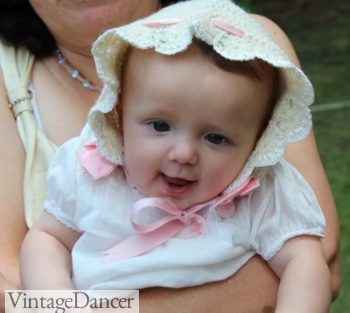
1920s baby clothes- vintage knit bonnet (Etsy) and vintage white baby gown (antique store)
Vintage baby clothes for the 1920s to the 1950s were generally the same. A long white gown, known as a christening gown, was worn for most of their first year. White gowns were easy to wash and clean again for the many spit-ups and poo-splosions that come with having a new baby. As babies began to crawl, the gowns shortened up to knee length with little bloomers or diaper covers underneath. Gowns usually came with matching bonnets that tied under the chin and a pair of booties. Gowns and bonnets were usually made of cotton or knit wool in winter.
The long gown shortened up in the ’40s and ’50s. Those that were long turned into sleepsacks, some with a drawstring at the bottom.
In the ’40s, there were one piece body suits or creepers, usually without legs. They had pintucks in the front, a faux belt, and a round collar. So cute! We would call them onesies today, except these were not made of knit (usually).
Both girls and boys wore dresses. Boys also wore pink and girls also wore blue. The colors as gender didn’t establish until later.
For shoes, babies wore knit or sewn booties and little leather lace up boots once they were walking. It was common practice to bronze a baby’s first pair of shoes as a memento.
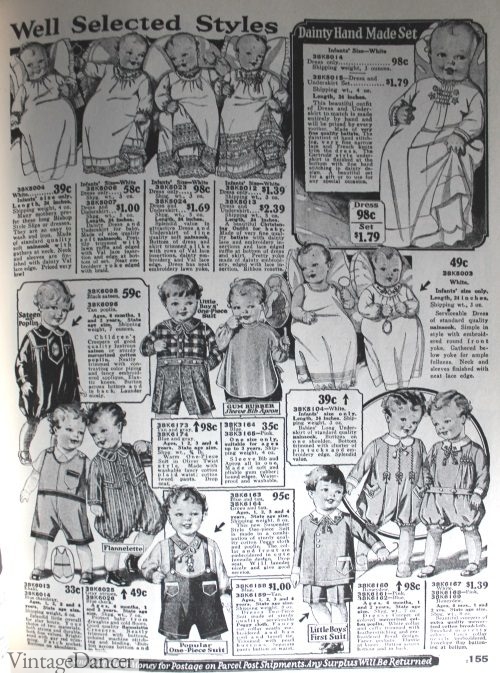
1927 baby clothes. White gowns and play rompers
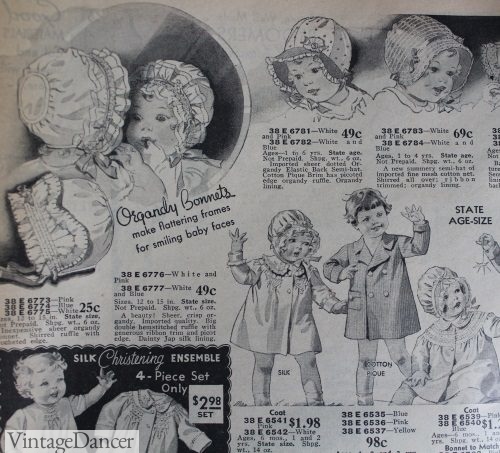
1930s baby bonnets
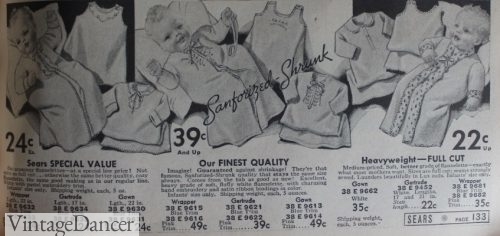
1930s baby gowns
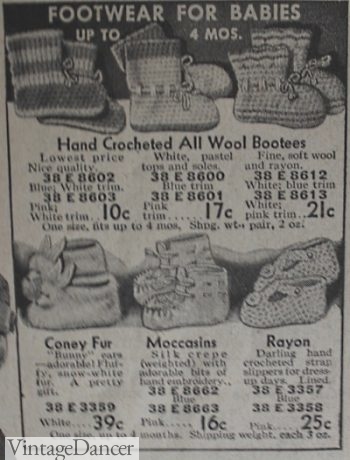
1930s knit baby shoes
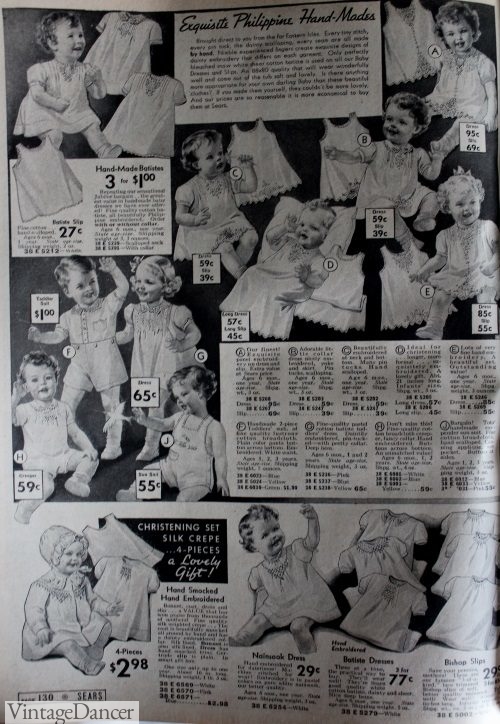
1930s baby clothes
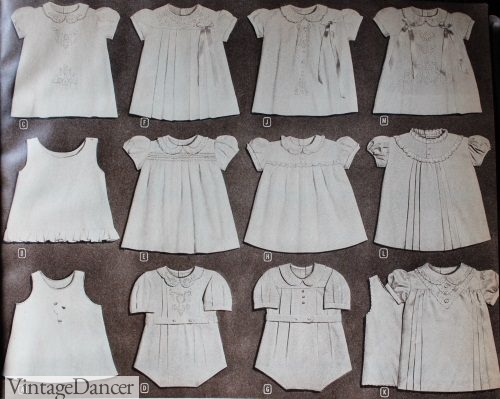
1940s baby gowns and creepers
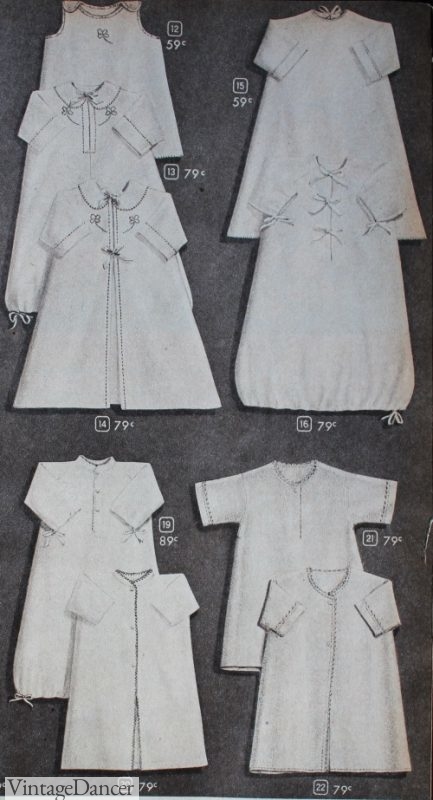
1940s white baby dresses- they now button or tie at the top like a robe
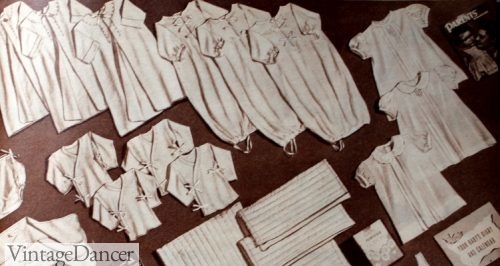
1950s baby layette set
Tips: When looking at antique or thrift store for baby clothes, look in the toy area for doll clothes. Small baby clothes are often mistaken as doll clothes (and vice versa). An online search for “christening gown” will give you many options for long white gowns. Lots of lace and fussy details were popular up to the 1930s. After that the embellishments reduced down to plain and simple and shorted to the ankle.
Vintage Toddler Clothes- Age 1-3 years
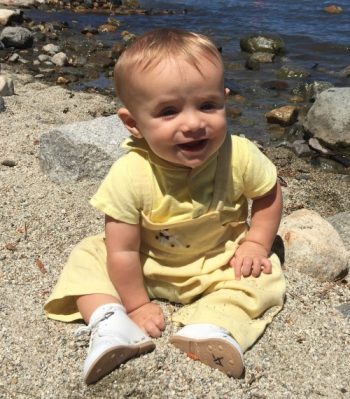
1950s Vintage baby overalls and newer white leather boots
Older babies who were walking up until they were about 3 years old moved into “tots” children’s clothing. These included short dresses for the girls and one piece creepers for the boys. Girls started to wear creepers as well in the late ’40s.
For boys, the look was a button down shirt attached to a pair of shorts or pants with a belt around the middle that was decorative, not functional. For girls, the blouse top and shorts were all one piece of fabric. The overall style was popular for both genders. In the 1920s and 1930s the legs ballooned out to look like baggy knickers. Popular prints were checks, seersucker, thin stripes, and solid pastels as well. The ’40s and ’50s saw primary colors: red, yellow, blue, green, brown. Rugged overalls were made of chambray, light denim, corduroy or heavy cotton.
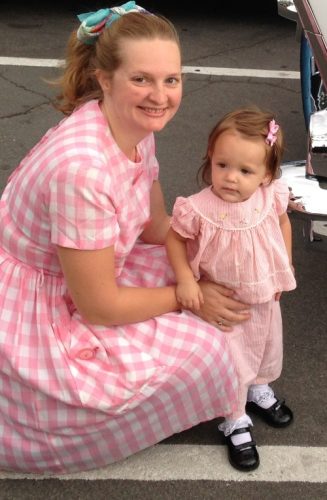
1950s toddler girl clothes (and mom too)
Girls’ toddler dresses were knee length. They had cute round Peter Pan collars trimmed with embroidery of lace. Dresses were cut wide with embellishments of pintucks, embroidery, lace, and pockets. They came with matching shorts or diapers covers. Girls often wore cotton stockings too, usually white, with Mary Jane shoes. In the 1930s and 1940s, dresses were pulled in with a tie sash around the ribs and stockings were replaced by bobby socks. Ruffles were added to sleeves to resemble aprons.
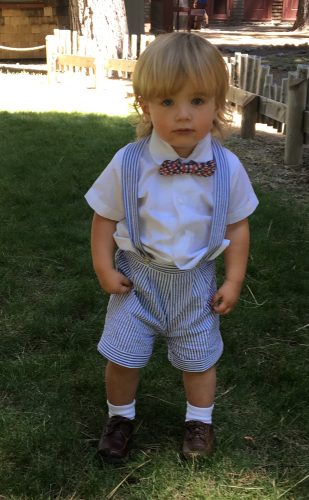
1920s-1950s Seersucker overalls and brown shoes
Overalls, shortalls, and coveralls were great playclothes for boys and girls ( it took until the mid 1930s to see more girl options). Playclothes were called play togs. Sailor themes were especially popular for boys. Stripes on the collars, anchors, and sail boats decorated the bibs. Knit shirts would be worn underneath, but in warm weather kids didn’t need them. One less things for mom to wash, too.
Toddler shoes started off with white or brown leather booties. These were soft sole shoes until more durable soles were needed for outdoor play. Boots for girls often had buckle straps. Girls also wore Mary Jane or T-strap shoes in white or black. Brown sandals were worn by boys in summer.
Both boys and girls wore lace up boots or Oxfords. Brown and white two tone Oxfords and saddle shoes were the best shoe fashion for bigger toddlers.
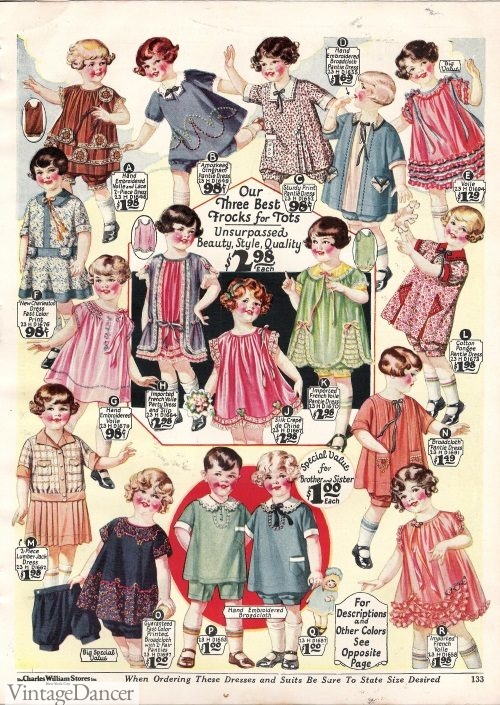
1927 little girls dresses
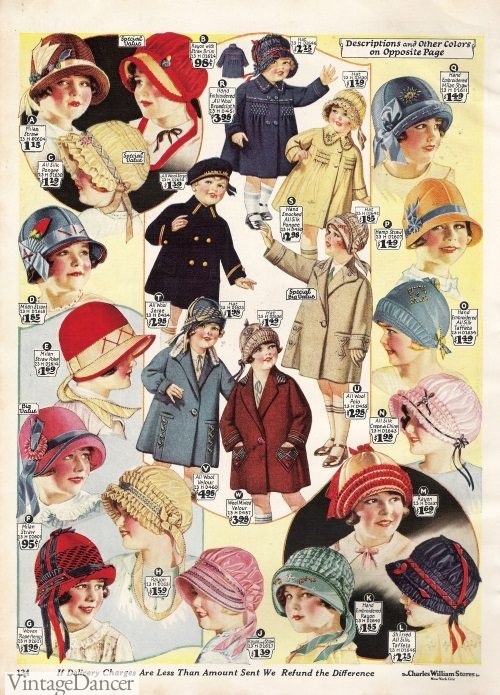
1927 girls hats and coats
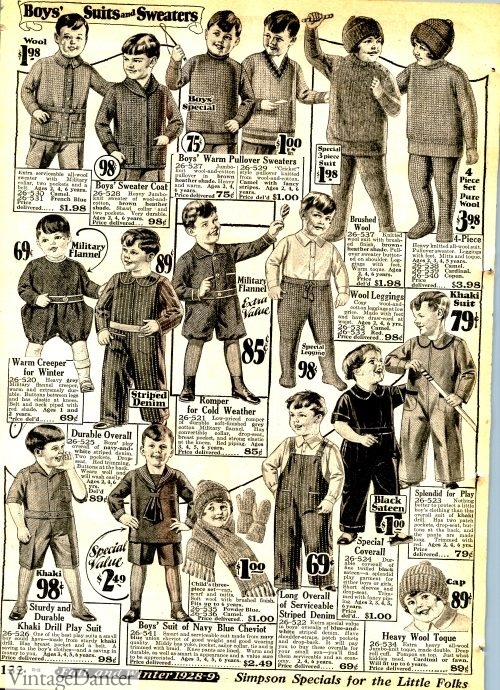
1928 Toddler Boys Clothes
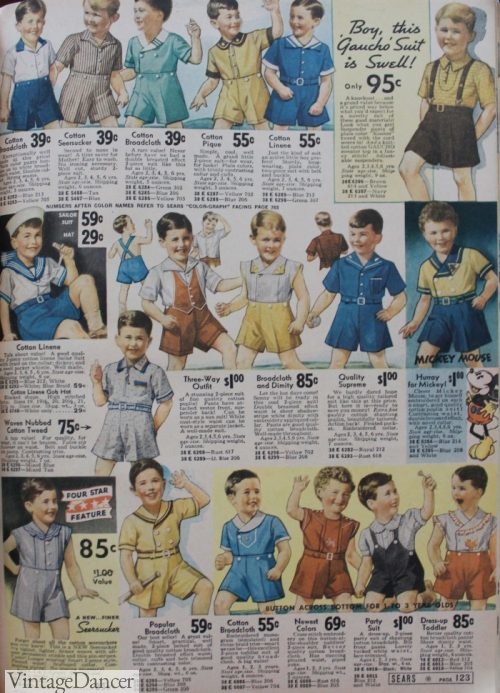
1937 toddler boy clothes
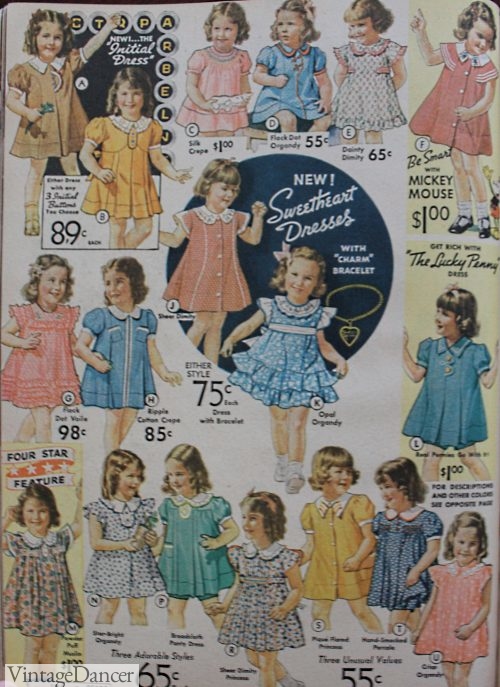
1937 toddler girls dresses
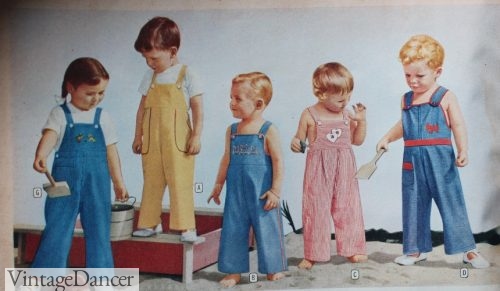
1940s overalls and playclothes
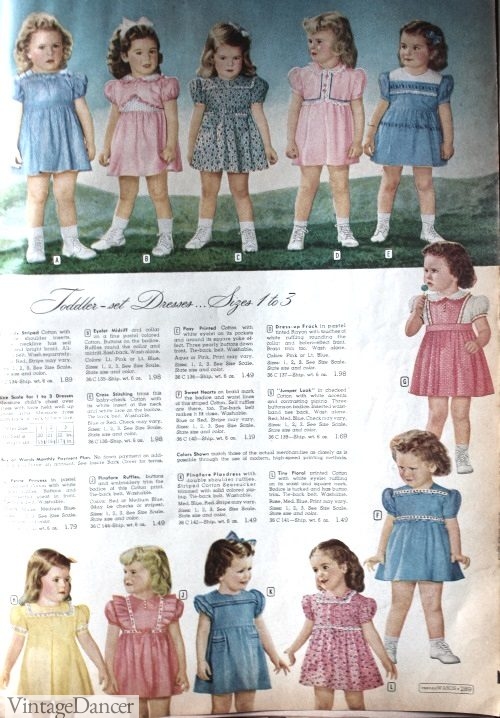
1940s girls toddler dresses
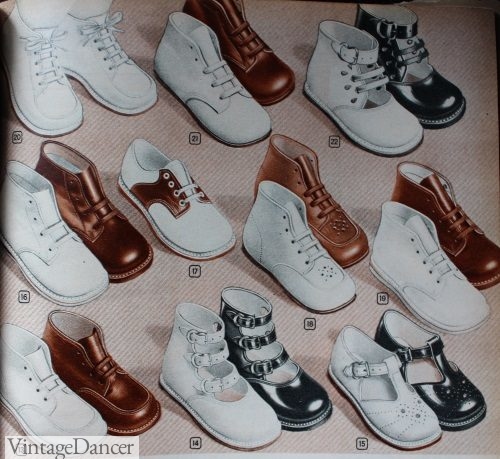
1940s toddler shoes
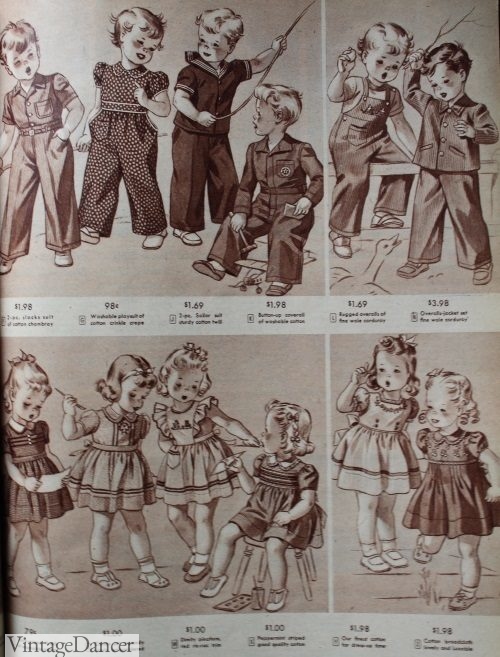
1950s boys and girls toddler clothing
Vintage Girl’s Clothing- ages 4 to 8
As children grew older, especially the girls, the clothing started to resemble small adult clothing. In the 1920s, girls’ dresses were knee length with drop waists. Big sashes, tiered layers of ruffles, pleated skirts, round collars with long bow ties, and lots of fussy trim were seen on their dresses. Colors were brighter and prints small and cheerful. Pink, jade green, orange, gas blue, tan, bright yellow, and lilac were worn in summer. Darker hues and long sleeves added to the winter selection.
Coordinating cloche hats were worn as well made of straw or fabric. The young girls’ hats resembled the pleated bonnets of the Regency era. Even more ruffles and long ribbon bows trimmed girls hats. For shoes, low heel Oxfords and Mary Janes were worn the most over a pair of cotton stockings.
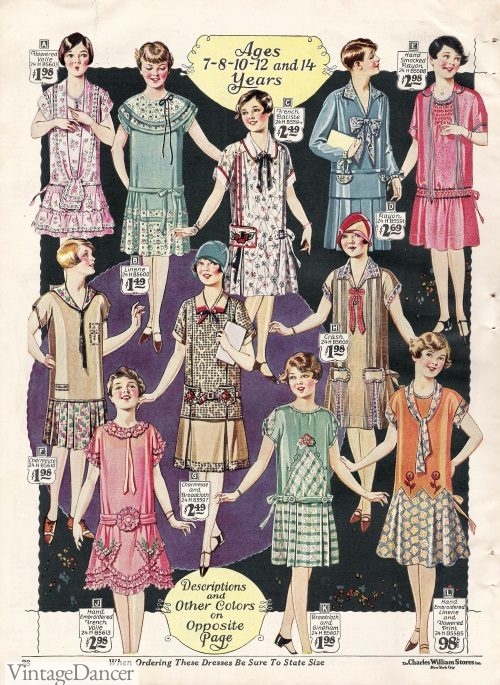
1927 girls dresses
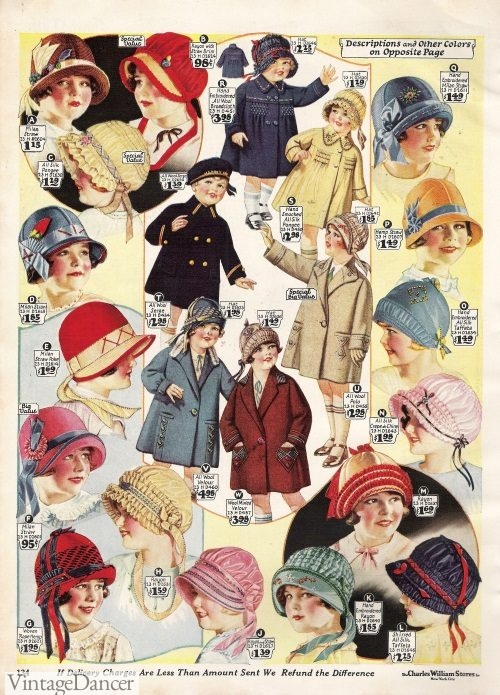
1927 girls hats
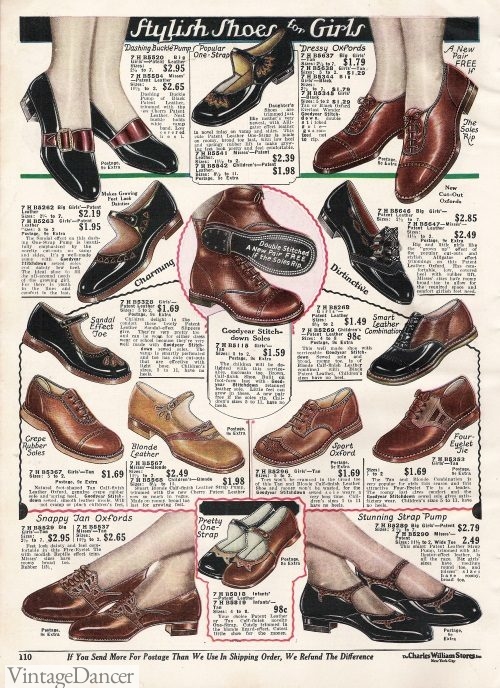
1927 girl’s shoes
1930s girl’s dresses moved the waistline up the high chest or to a waistless tent shape. For little girls, the hemline also rose to above the knee. Large white ruffle trimmed collars and framed the face. Cap sleeves let the kids be free to move about. Shoes were the same as the ’20s.
Older girls had a natural waist line and a below the knee length. Ruffles trimmed the hem, neckline, and collar on many styles. Pastels were very popular colors.
Play clothes for girls were introduced in the early ’30s. Just like boys, they could wear cotton overalls, wide leg pants, or one piece shortalls.
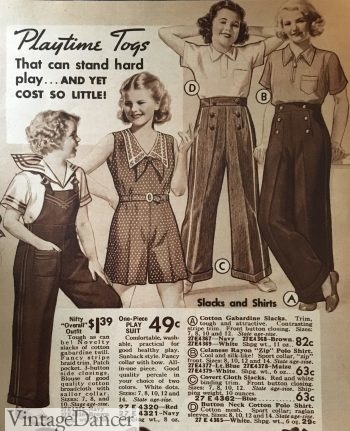
1934 girls play clothes- pants, shortalls and overalls
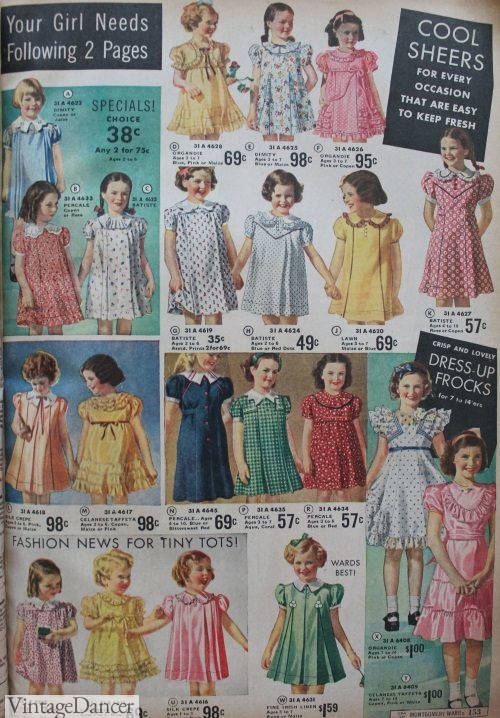
1937 little girls dresses
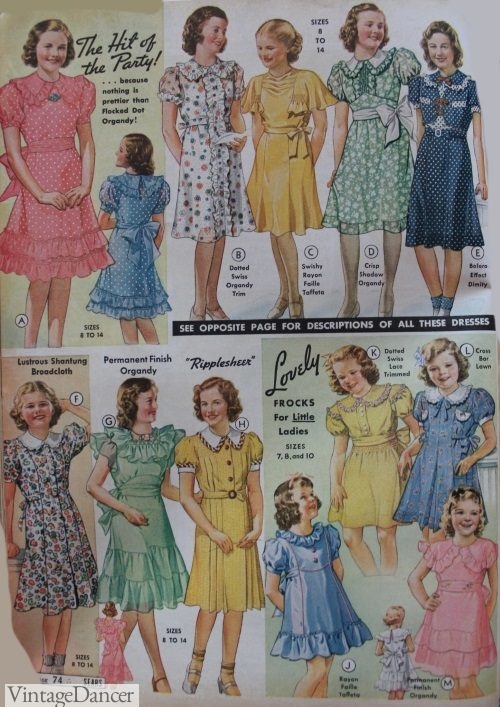
1937 older girls dresses
1940s girl’s dresses were similar to the 1930s. Hemlines for little girls were still above the knee and ruffles were still popular trim, but this time they were much smaller and there were less of them. The waistline dropped to the natural line just like older girls’ styles. Richer colors of red, navy blue, sky blue, pink, and green were worn. Patriotic colors and patterns continued to be very popular.
Skirt and blouse separates with a matching jacket mimicked mom’s new look. Play clothes of overalls, pants, and knit T-shirts remained very popular. Shoes were Mary Janes, saddle shoes, and loafers with white or colored socks.
Older girls and teens adored the peasant style. Learn more about those here.
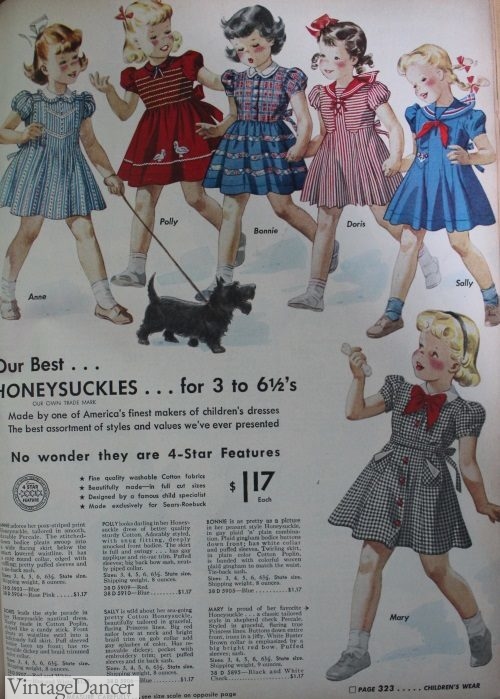
1943 Girls Dresses
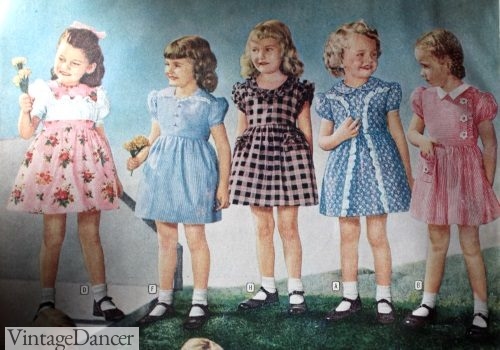
1940s little girls dresses
1950s girl’s clothes exploded with fun novelty characters embellished on the blouse, skirt, or jackets and a variety of cute prints. Polka dots, plaid, stars, checks, stripes, big flowers and abstract art. They looked a lot like fun adult dresses with full skirts worn over a petticoat. White bobby socks and Mary Jane shoes continued to be favorites. Matching accessories like a small purse, pair of short white gloves and big hair bow were a must! Older girls preferred saddle shoes or penny loafers, a scarf neck tie, and cardigan sweaters.
For fun, the girls could wear overalls and pants, but they favored the newer capri length pant with matching button down blouse instead.
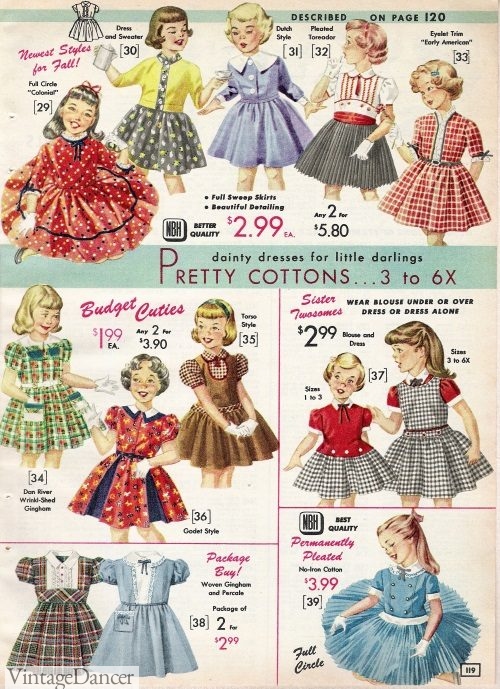
1957 little girls dresses
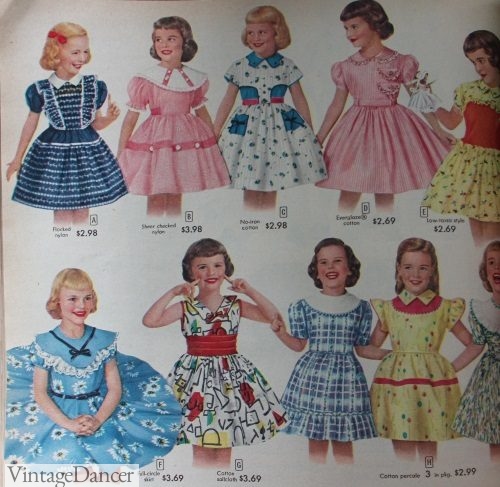
1950s girls dresses
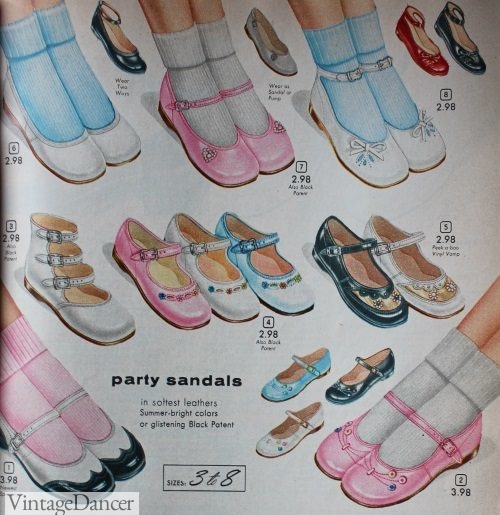
1950s girls shoes
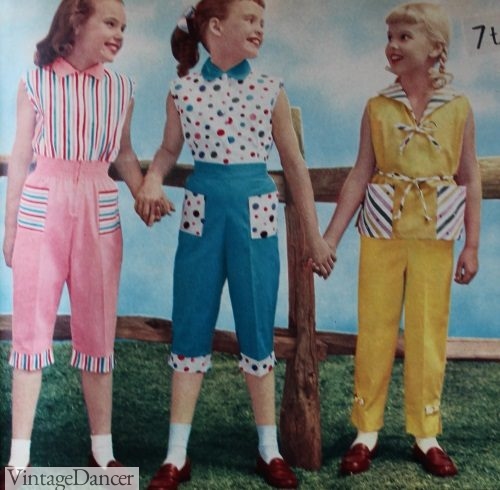
1950s girls capri and blouse sets
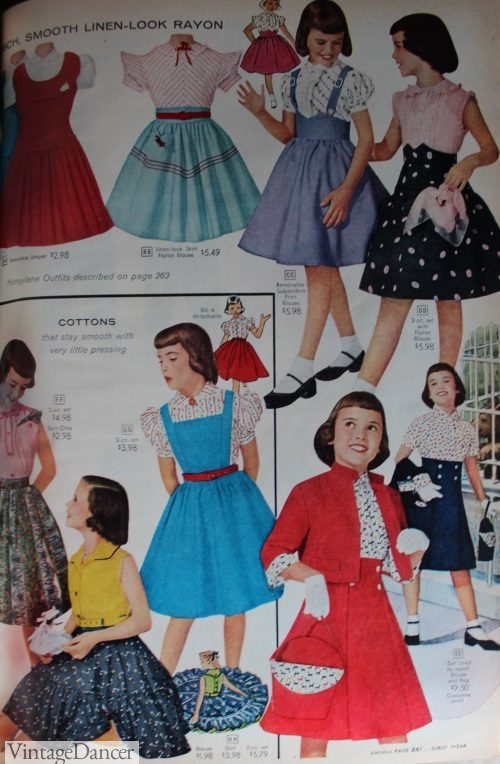
1950s older girls clothing
Vintage Boys’ Clothing- ages 4 to 8
In the 1920s, boys’ clothing had two options. Play clothes were one piece overalls with separate shirt, shorts, and a belt. They could be different or matching materials. Shorts reached to below the knee, like knickers. Tall socks were worn with knickers and a pair of lace up boots. Dress clothes were mini adult suits. Boys would wear matching knicker pants up until age 10-13 or whenever mom and dad let them grow up enough to wear long pants. A wide flat cap (newsboy cap) topped a boy’s head for both looks.
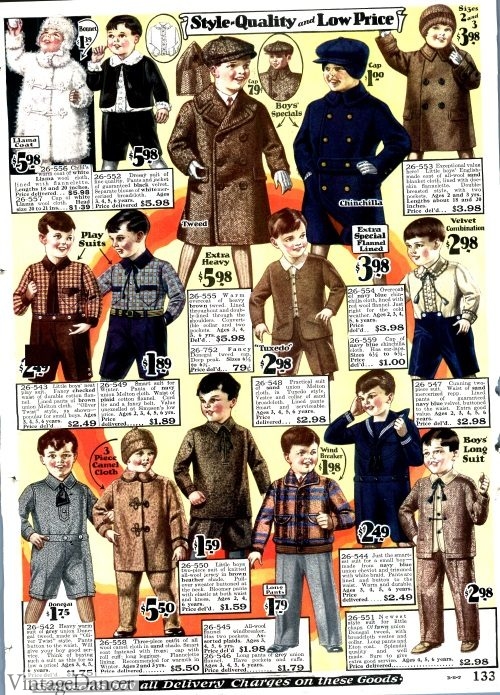
1928 Boys clothing
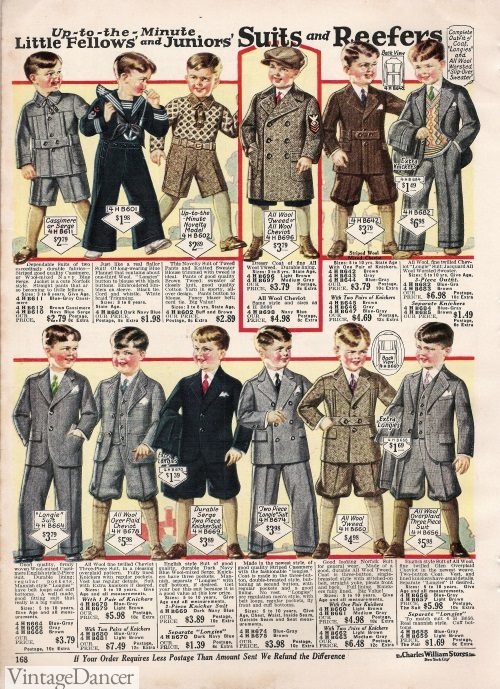
1927 boys suits and knickers
1930s boys’ clothing reduced the knicker trend and replaced it with more colorful shorts with contrasting button down shirts. Overalls continued to be popular as well as nautical or sailor themes. Dressy suits were worn with shorts or pants in colors and patterns that looked like Dad’s. Boots were replaced by lace up Oxfords in black, brown, or black & white.
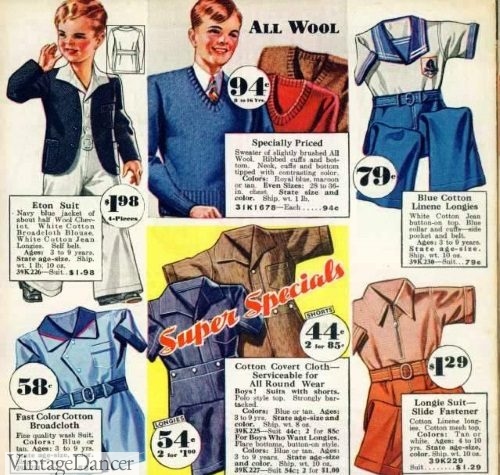
1930s Boys Clothing
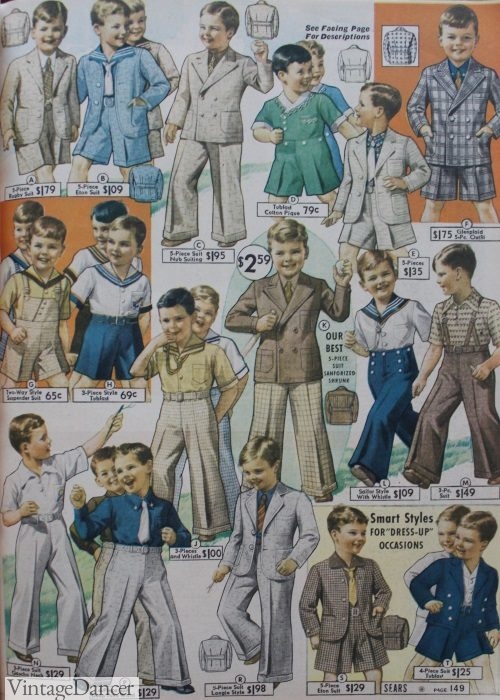
1937 older boys summer clothes
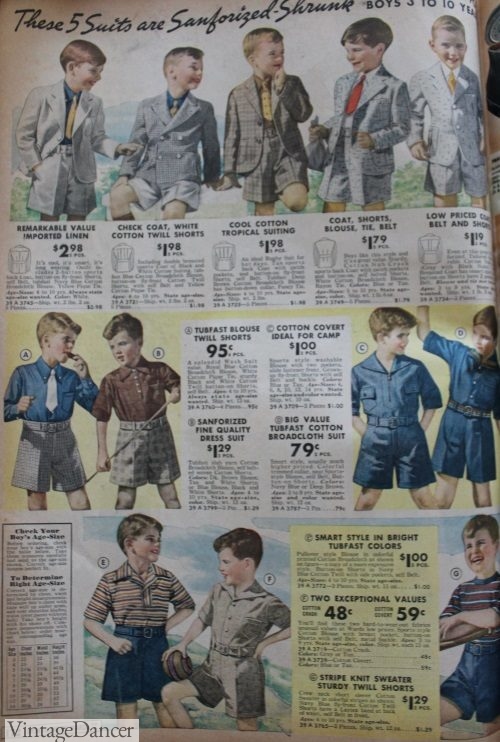
1937 young boys clothes
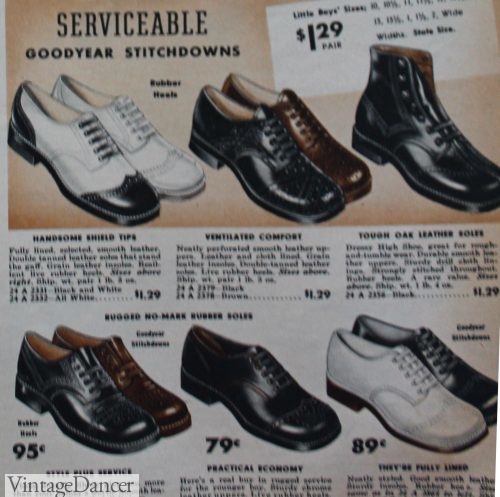
1937 boys shoes
1940s boys clothing really started to look like casual men’s clothes, although the colors and prints were more vibrant. Separate knit shirts and short shorts or long pants were mixed with knit sweaters and sport coats. Many boys dressed like sailors or other military looks as well as western wear (lil’ cowboys).
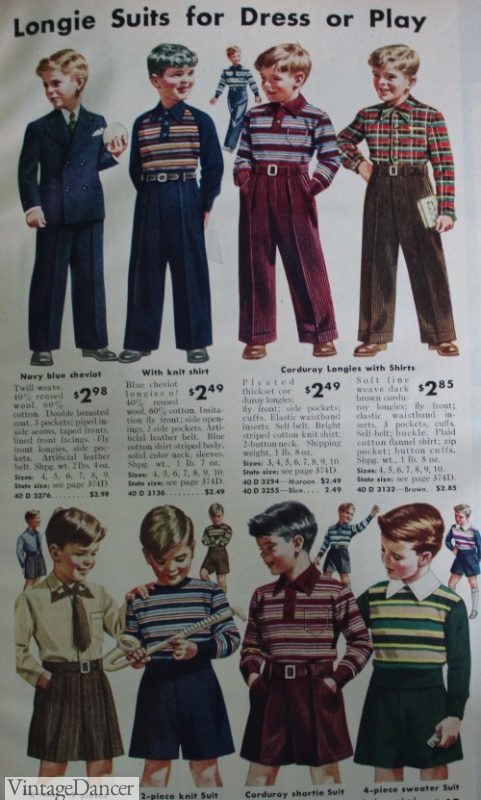
1942 boys shirts, pants,& shorts
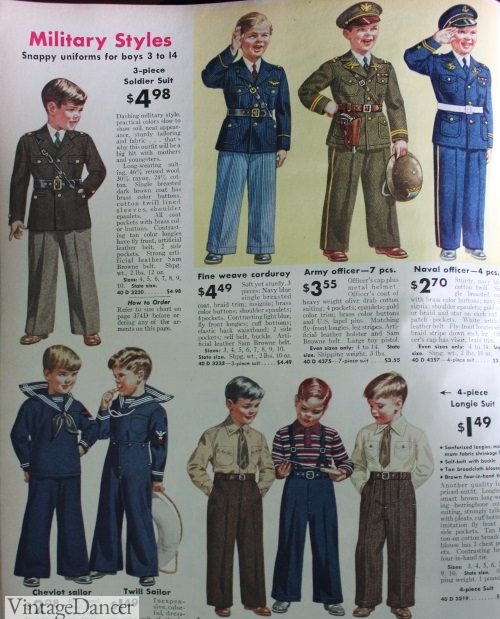
1943 boys military mini clothes
1950s older boys continued to look more like Dad in button down tropical bowling shirts, high waist pants, bomber jackets, denim jeans, saddle shoes, sport coats, ties, and fedora hats. Little boys wore these looks along with the still popular overalls (now in bright colors), shortalls, and suspender pants. Footwear grew up a little bit with more choices: high top sneakers, sandals, two tone Oxfords, and moccasins.
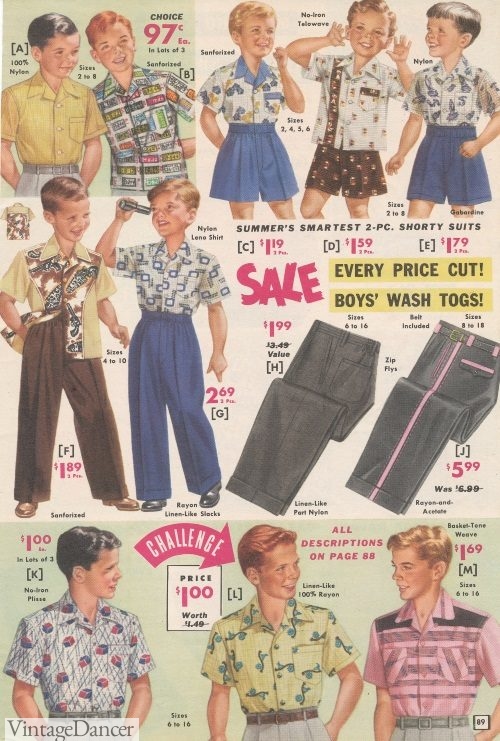
1955 boys summer clothes
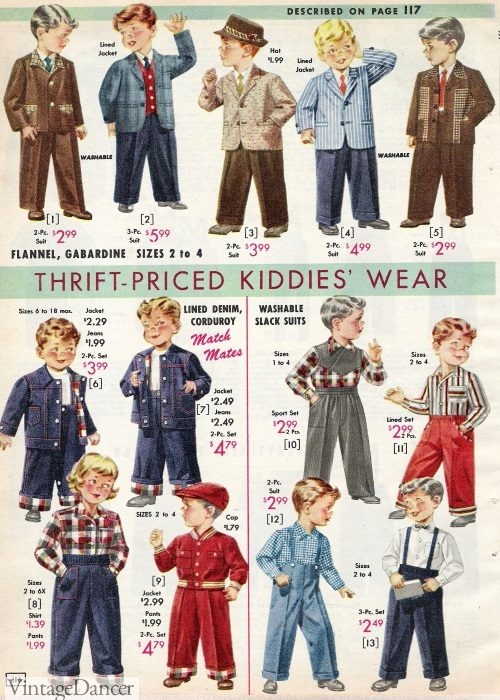
1957 little boys casual clothes
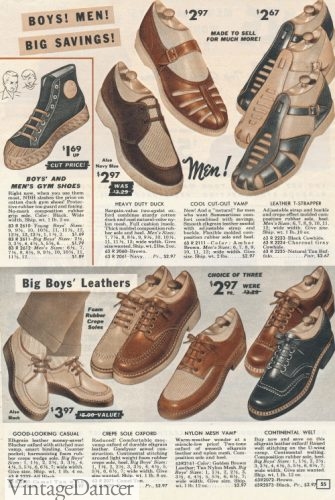
1955 boys shoes
Want to see more examples of kids’ clothing? Look at my Pinterest board. You can also contact me with the specific decade, gender, and style of clothing you want to see from my catalogs.
Here are some tips on choosing an outfit and where I like to shop.
- Pick your decade but don’t be too strict. I put my kids in vintage 1950s clothes for a 1920s event because 1. They are easier to find. 2. They are very cute. 3 The styles didn’t change that much.
- Kids clothes or little adults? Children can wear vintage kids clothes just like they did back then, or you can dress them like a little adult in all the styles grownups wore. The choice is yours. There are some cute options for matching mommy and me sets as well.
- Sailor Clothes – The one style of clothing for all the decades were nautical or sailor themed clothes. Navy and white dresses, pants, overalls, rompers and hats. You can’t go wrong with a sailor outfit for any decade.
Where to shop vintage children’s clothing:
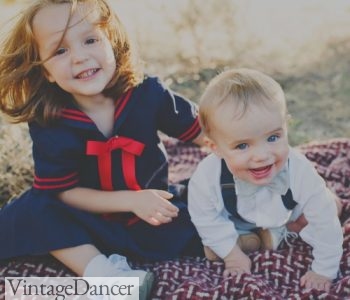
My cute kids : ) 1960s sailor girls dress and white maru jane shoes. New baby boy knickers, shirt, suspenders and bow tie!
Genuine Vintage: Browse through Etsy or eBay for the decade + gender. You can also find handmade vintage inspired clothes on Etsy as well. This list of 10 vintage children’s clothing sellers on Etsy is a good place to start looking.
Vintage Inspired Children’s Clothes:
If I can’t find what I need in vintage I turn to new, vintage reproduction or inspired clothing. There is a lot out there but its not always easy to find.
- Amazon: Has a lot of choices for girls ’50s dresses, boys knickers or suits, sailor themes, costumes, and baby gowns. I like are Feltman Brothers. Since 1916, they have made classic vintage style baby clothes. White gowns, rompers, body suits, smocked dresses and sweaters. Carriage Boutique and Petit Ami are similar brands.
- Boden (UK) and mini Boden at Nordstrom: I love this brand for all their mid century inspired kids clothes. Cute enough to wear in modern day times, too.
- Zuilly: Stock is always changing, so keep an eye on the new arrivals. Sometimes I find the most adorable vintage style kids clothes and shoes here.
- Hannah Anderson: Several cute pinafore vintage style dresses.
Vintage Inspired Kids’ Clothes:
These are a variety of vintage inspired kids clothes for babies, toddler and little kids and sewing patterns too. You can shop by decade as well: 1920s children’s, 1930s children’s, 1940s children’s, and 1950s children’s.
